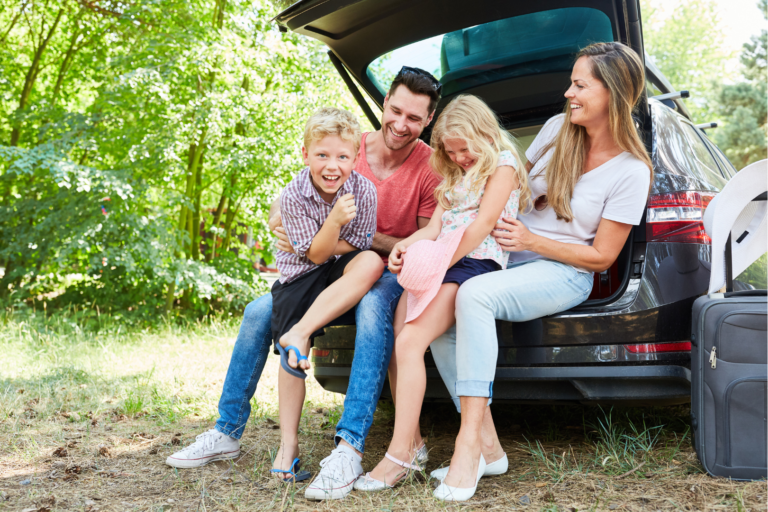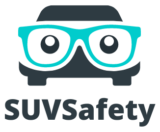
Welcome to SUV Safety and Safe Family Vehicles
SUVs, or sport utility vehicles, are popular among families for their size and versatility. However, safety is always a top priority when it comes to choosing a family SUV. In recent years, SUV safety has improved dramatically thanks to technological advancements and safety regulations. In this article, we will discuss SUV safety features and the top-rated safest SUVs.
One of the most important safety features in SUVs is the Electronic Stability Control (ESC) system. This system can detect and reduce the risk of skidding and loss of control, which is especially important in SUVs due to their higher center of gravity. Another crucial safety feature is airbags. Most SUVs come equipped with front and side airbags to protect passengers in the event of a collision. Some SUVs also have rear airbags, which provide additional protection for passengers in the backseat.
Top Rated Safest SUVs 2021
2021 Volvo XC90
In terms of top-rated safest SUVs, the 2021 Volvo XC90 is a popular choice. The XC90 has earned a 5-star overall safety rating from the National Highway Traffic Safety Administration (NHTSA) and has been named a Top Safety Pick+ by the Insurance Institute for Highway Safety (IIHS). The XC90 also comes with a suite of advanced safety features, including blind-spot monitoring, rear cross-traffic alert, and lane departure warning.
2021 Mazda CX-5
Another highly rated SUV is the 2021 Mazda CX-5. The CX-5 has earned a 5-star overall safety rating from the NHTSA and has been named a Top Safety Pick+ by the IIHS. The CX-5 also comes with a host of advanced safety features, including adaptive cruise control, forward collision warning, and lane departure warning.
2021 Subaru Outback
The 2021 Subaru Outback is also a popular choice for families due to its safety features. The Outback has earned a 5-star overall safety rating from the NHTSA and has been named a Top Safety Pick+ by the IIHS. The Outback also comes with standard EyeSight Driver Assist Technology, which includes adaptive cruise control, pre-collision braking, and lane departure and sway warning.
2021 Honda CR-V
If you’re looking for a more affordable option, the 2021 Honda CR-V is a great choice. The CR-V has earned a 5-star overall safety rating from the NHTSA and has been named a Top Safety Pick+ by the IIHS. The CR-V also comes with standard Honda Sensing, which includes adaptive cruise control, collision mitigation braking, and lane departure warning.
2021 Kia Telluride
When it comes to the best family SUVs, it ultimately depends on your specific needs and preferences. However, the 2021 Kia Telluride is a popular choice for its spacious interior and family-friendly features. The Telluride has earned a 5-star overall safety rating from the NHTSA and has been named a Top Safety Pick by the IIHS. The Telluride also comes with a suite of advanced safety features, including blind-spot monitoring, rear cross-traffic alert, and safe exit assist.
2021 Toyota Highlander
Another great option is the 2021 Toyota Highlander. The Highlander has earned a 5-star overall safety rating from the NHTSA and has been named a Top Safety Pick+ by the IIHS. The Highlander also comes with standard Toyota Safety Sense 2.5, which includes adaptive cruise control, lane departure warning, and automatic high beams.
2021 Honda HR-V
If you’re looking for a smaller SUV, the 2021 Honda HR-V is a great choice. The HR-V has earned a 5-star overall safety rating from the NHTSA and has been named a Top Safety Pick by the IIHS. The HR-V also comes with standard Honda Sensing, which includes collision mitigation braking, adaptive cruise control, and lane departure warning.
Important Features To Look For in a Family SUV
When it comes to purchasing an SUV, safety should always be a top priority. SUVs are larger vehicles with a higher center of gravity, which can make them more prone to accidents. Additionally, SUVs often carry more passengers than other vehicles, making safety features even more important. With this in mind, it’s crucial to look for an SUV that has advanced safety features and a high safety rating.
One important safety feature to look for in an SUV is airbags. Most SUVs come with front and side airbags, but some models also have rear airbags for added protection. Another key safety feature is Electronic Stability Control (ESC), which helps prevent skidding and loss of control on slippery roads or during sudden maneuvers.
For families, a spacious interior with a big backseat or third row is important for both comfort and safety. A larger interior can provide more space for passengers and their belongings, reducing the risk of injuries in the event of a collision. Additionally, having a third row can allow families to accommodate more passengers, which can be useful for carpooling or family vacations.
Other important safety features to look for in an SUV include blind spot monitoring, rearview cameras, and lane departure warning systems. These features can help prevent accidents by providing drivers with more information about their surroundings and alerting them to potential hazards. Overall, prioritizing safety when purchasing an SUV can help keep you and your passengers safe on the road.
Child Medical Transportation Vehicles
For children with medical complications who cannot be transported in a regular SUV for long periods of time, there are specialized medical transportation vehicles available. These vehicles are designed to provide a safe and comfortable environment for children who require medical care during transport. Medical transportation companies may have a fleet of vehicles that includes vans, buses, and ambulances that have been modified to meet the needs of children with various medical conditions.
Long Distance Medical transportation vehicles may include specialized equipment, such as oxygen tanks, ventilators, and heart monitors, to ensure that children receive the appropriate medical care during transport. The vehicles may also have amenities such as comfortable seating, entertainment systems, and climate control to ensure that children are comfortable during the journey. The medical staff on board the vehicle will be trained to provide medical care during transport and will be able to respond quickly to any medical emergencies that may arise.
